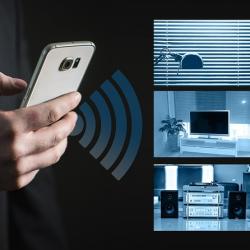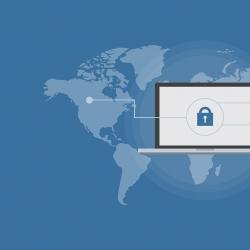How to Safeguard Your Smart Home Devices from Hackers
Many households are shifting towards smart home devices for increased convenience, energy efficiency, and security. However, as our homes get smarter, they also become more vulnerable to cyber threats. Protecting these devices from hackers is crucial to safeguarding your privacy and data. Here's how you can minimize risks and secure your smart home setup.
1. Understanding the Risks: Why Security Matters
Smart home devices such as cameras, thermostats, lights, and locks are interconnected through the internet, making them potential entry points for hackers. A breach in any of these devices can lead to unauthorized access to sensitive information, including audio and video recordings, personal data, or even control over home appliances.
2. Secure Your Network
The first line of defense is a secure home network. Here’s how to do it:
-
Change Default Network Names and Passwords: Default names (SSID) and passwords on your routers are easily guessed by hackers. Create unique and complex passwords to enhance security.
-
Enable Encryption: Always use WPA3 encryption on your Wi-Fi network if available. If not, WPA2 is the next best option.
-
Use a Guest Network: Isolate your smart devices from computers and phones by setting up a separate guest network. This approach limits access in case of a breach.
-
Regularly Update Router Firmware: Manufacturers release updates to patch vulnerabilities. Ensure your router firmware is up-to-date to protect against known threats.
3. Keep Firmware Updated
Device manufacturers provide firmware updates to fix security flaws. Regularly check and update your smart devices to the latest firmware versions. Enable automatic updates where possible, so you don’t miss critical patches.
4. Use Strong, Unique Passwords
-
Avoid Default Credentials: Always change default usernames and passwords during setup.
-
Create Strong Passwords: Use a combination of upper and lower-case letters, numbers, and symbols. Avoid using easily guessable information like birthdays or simple sequences.
-
Utilize Password Managers: Consider using password managers to generate and store strong passwords securely.
5. Enable Multi-Factor Authentication (MFA)
Wherever possible, enable multi-factor authentication on your smart home accounts. MFA adds an extra layer of security by requiring verification through a secondary method like a text message or authentication app, making unauthorized access significantly more challenging.
6. Manage Permissions and Disable Unused Features
-
Review Permissions: Regularly check the permissions granted to each device and app. Ensure they only have access to necessary data and functions.
-
Disable Unnecessary Features: Turn off features like remote access or voice recognition if they aren't needed. This minimizes the potential entry points for hackers.
7. Segment Your Devices
Network segmentation adds another layer of protection by dividing your network into separate segments for different types of devices. If one segment is compromised, hackers cannot easily access devices on other segments.
8. Invest in Security Software
Some security solutions are designed specifically for smart home devices. Consider investing in reputable software that can monitor network traffic, identify vulnerabilities, and alert you to potential threats.
9. Educate Yourself and Your Family
A well-informed household is a secure household. Educate all family members about best security practices, such as recognizing phishing attempts and understanding the importance of maintaining device security.
10. Consider Professional Security Services
For added peace of mind, professional cybersecurity services offer comprehensive protection tailored to smart homes. They can provide expert guidance and monitor your network for threats, allowing you to enjoy your smart home with confidence.
Conclusion
While smart home devices offer incredible benefits, they also introduce risks that need proactive management. By implementing these measures, you can significantly reduce the likelihood of a cyber attack and protect your digital domain. Stay informed and vigilant, as the landscape of cyber threats is continuously evolving. Taking these precautions not only protects your devices but also ensures that your home remains a sanctuary in the digital age.






















